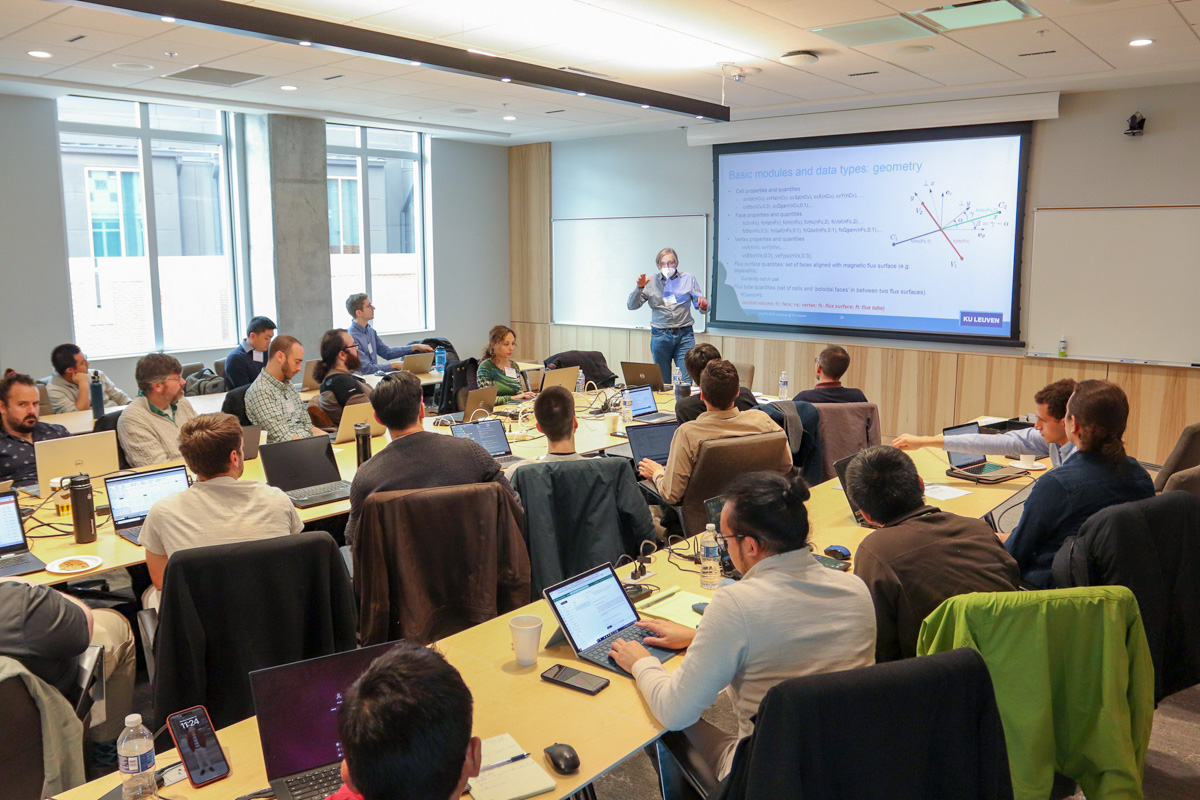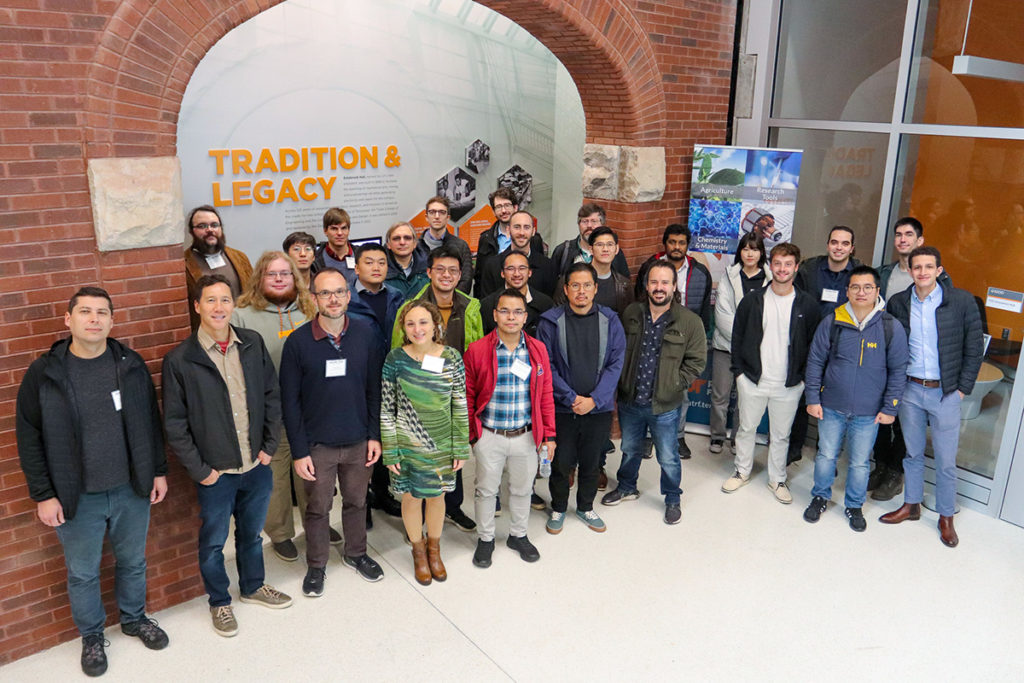On December 13, the eyes of the world focused on Livermore, California, where an experiment at the National Ignition Facility shared the news that they had, for the first time, produced a fusion reaction that released more energy than it consumed.
Roughly 2,000 miles away at the same time, the future of fusion was getting a boost, thanks to a workshop being hosted by Zinkle Fellow and Assistant Professor Livia Casali of UT’s Department of Nuclear Engineering and Oak Ridge National Laboratory Research Scientist Jeremy Lore, in collaboration with Research Scientist Xavier Bonnin of the ITER Organization.
The workshop, which took place in the Zeanah Engineering Complex the week of December 12th-16th, was geared towards introducing researchers and scientists to the new features of the Scrape-Off Layer Plasma Simulation (SOLPS) code that is the hallmark of plasma boundary simulations within the fusion community.
“To be able to achieve practical, meaningful fusion energy will require us to have a better understanding of the scrape-off layer and diverter regions, and knowledge of how to control the plasma in those areas,” said Casali. “ITER and fusion researchers do a good job of continually improving the code and expanding its abilities.”
The International Thermonuclear Experimental Reactor, more commonly known as ITER, helps disseminate knowledge of new versions of the code, referred to as SOLPS-ITER. The latest version of the code was released in late November.
According to ITER, the almost complete rewrite of the code allows researchers to observe “important phenomena occurring at places where the plasma particles encounter other solid structures in the main vacuum vessel.”
While the conference in the Zeanah Complex served as a training opportunity for researchers in the United States, another one, held in Belgium brought the European members of ITER up to speed, while a third one planned in Asia for 2023 will aid researchers there.

During the workshop hosted by UT, presentations were given on how the new capabilities of the code can be put into use, tutorials were held on activating the features of the new code, and connections were made between the code and their specific research goals.
“We addressed a number of fusion-related topics, from grid generators to tools that can help them quantify errors and optimize data,” said Casali. “We also had a discussion about ways that SOLPS-ITER could be refined in its next iteration, as well as giving them hands-on lessons with the current code.”
Thanks to advancements in that code, and helping researchers understand its capabilities through conferences like the one UT hosted, the future of fusion is bright indeed.
